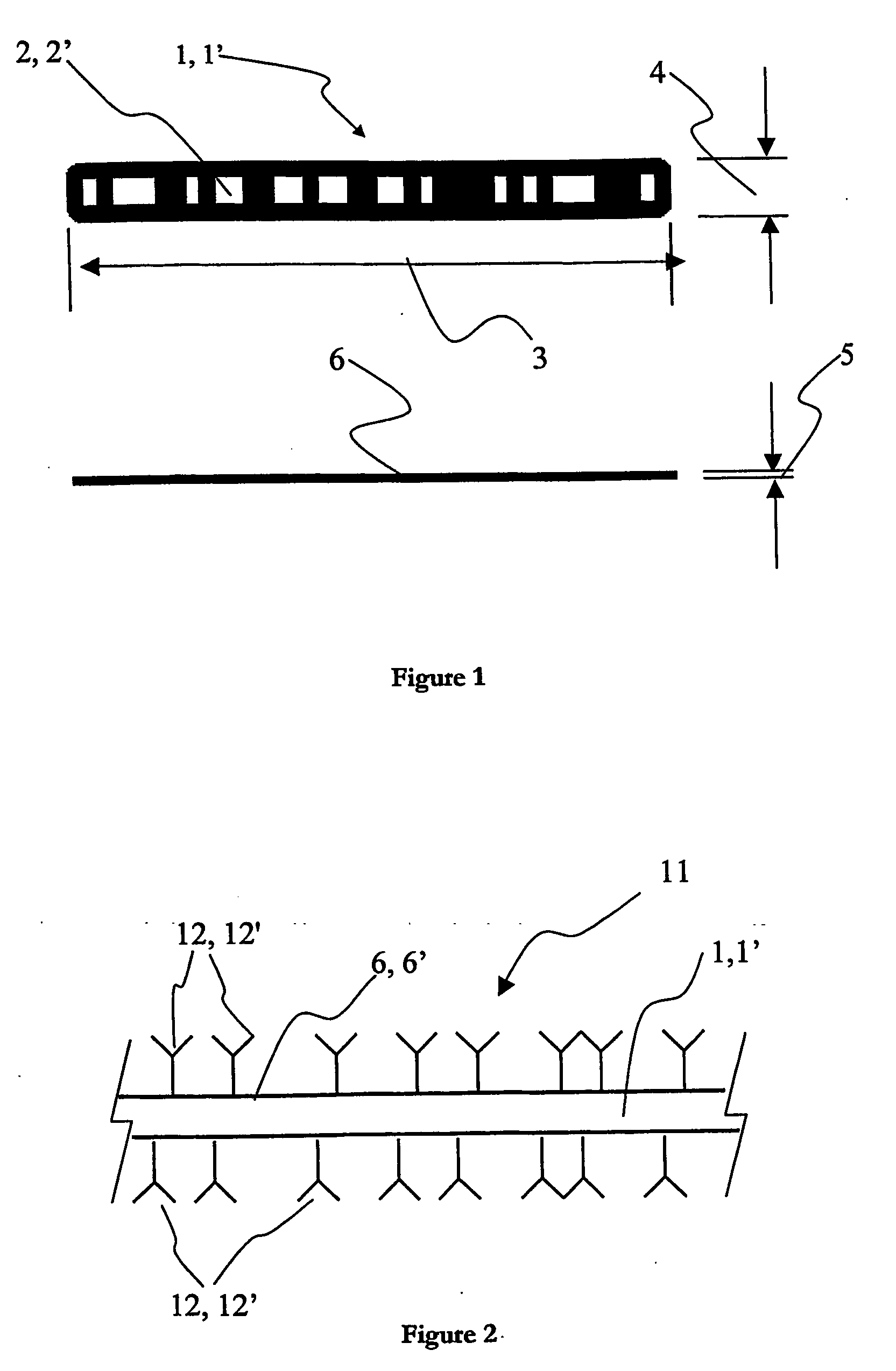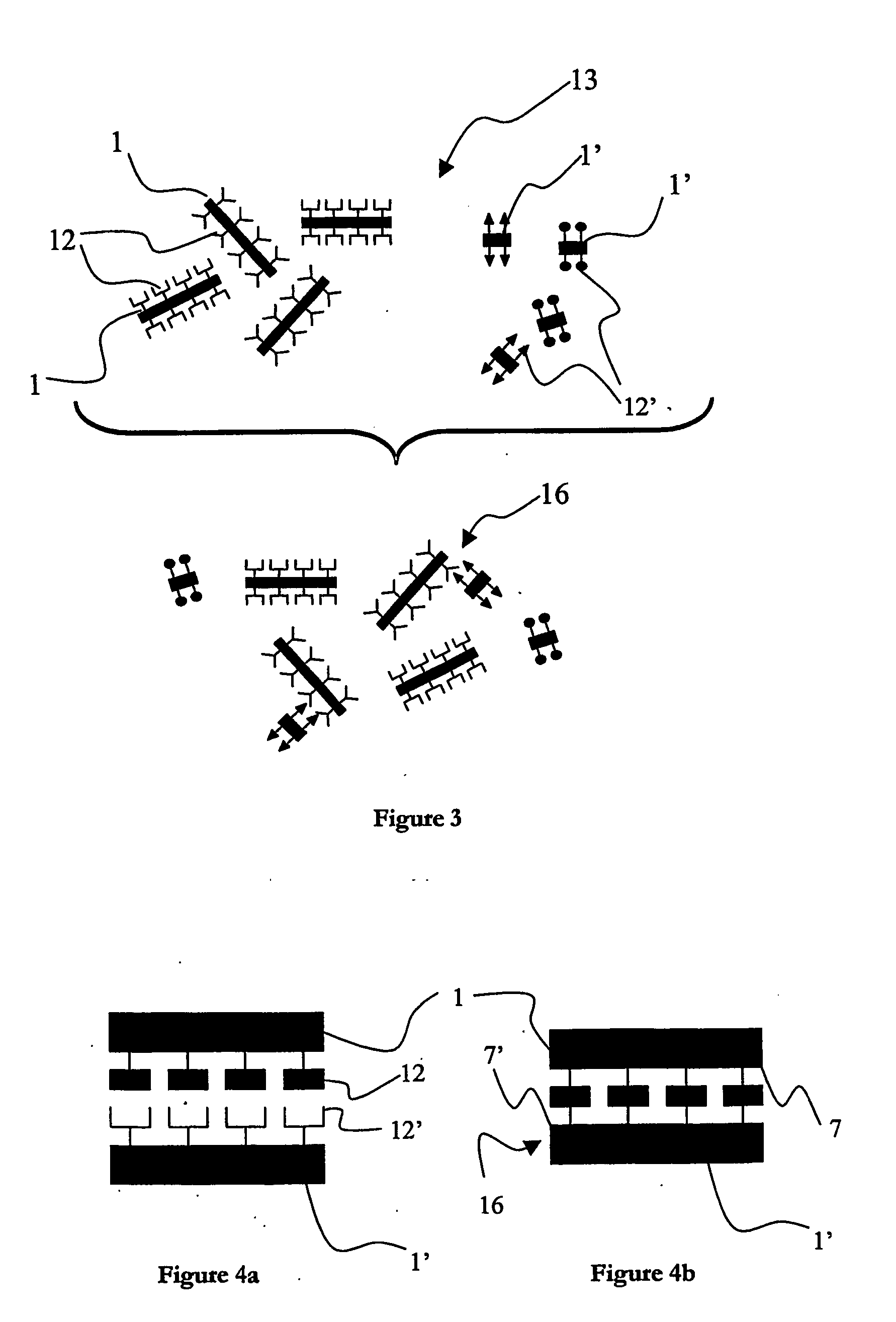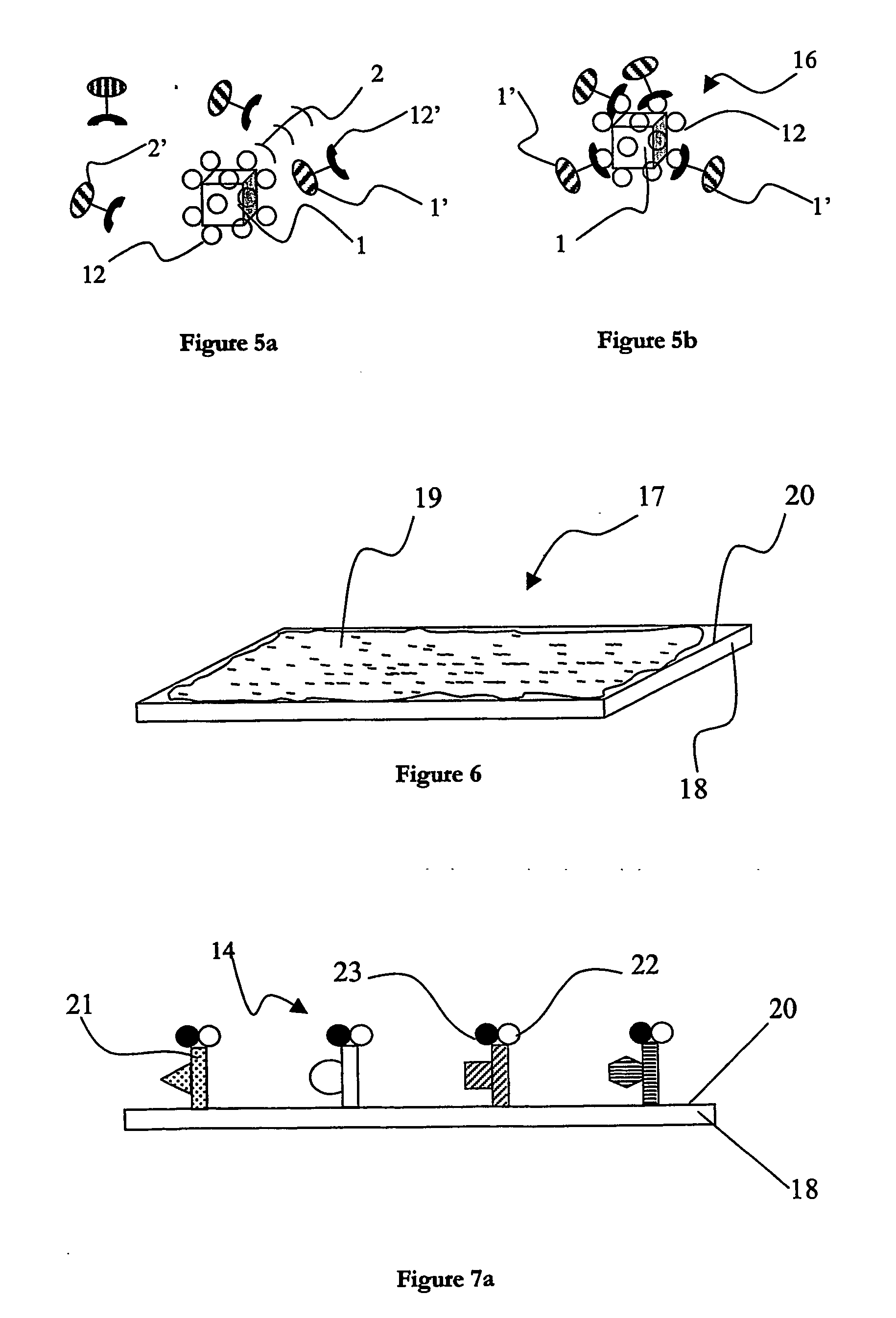System and method for solution based multiparameter analysis of analytes
a multi-parameter analysis and solution technology, applied in the field of systems for multi-parameter analysis of analytes in solution, can solve the problems of poor quality of spotted molecules on microarrays, high cost, and high time-consuming and expensive studies, so as to reduce the risk of spectral overlap and false positives, improve quantification, and improve the possibility of quantification
- Summary
- Abstract
- Description
- Claims
- Application Information
AI Technical Summary
Benefits of technology
Problems solved by technology
Method used
Image
Examples
Embodiment Construction
[0033] In FIG. 1, there is shown an illustration of a preferred embodiment of a support for use in a system according to the invention. This preferred embodiment of the support is susceptible to being used as a primary support1 and / or a secondary support 1′ in the system for multiparameter analysis of analytes described further in the following detailed description. There is shown a single support 1, 1′; such a support will also be referred to as a microcarrier, microparticle or “bead” in the following description. The primary supports 1, 1′ can be fabricated from virtually any insoluble or solid material, for example one or more of polymers, silicates, glasses, fibres, metals or metal alloys. In the preferred embodiment of the invention, the supports 1, 1′ are fabricated from a metal, such as gold, silver, copper, nickel, zinc or most preferably aluminium. It is also preferable to use one or more polymers, such as polystyrenes, polyacrylates, polyamides, or polycarbonates when fabr...
PUM
| Property | Measurement | Unit |
|---|---|---|
| Length | aaaaa | aaaaa |
| Length | aaaaa | aaaaa |
| Length | aaaaa | aaaaa |
Abstract
Description
Claims
Application Information
 Login to View More
Login to View More - R&D
- Intellectual Property
- Life Sciences
- Materials
- Tech Scout
- Unparalleled Data Quality
- Higher Quality Content
- 60% Fewer Hallucinations
Browse by: Latest US Patents, China's latest patents, Technical Efficacy Thesaurus, Application Domain, Technology Topic, Popular Technical Reports.
© 2025 PatSnap. All rights reserved.Legal|Privacy policy|Modern Slavery Act Transparency Statement|Sitemap|About US| Contact US: help@patsnap.com



